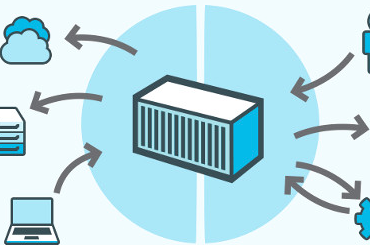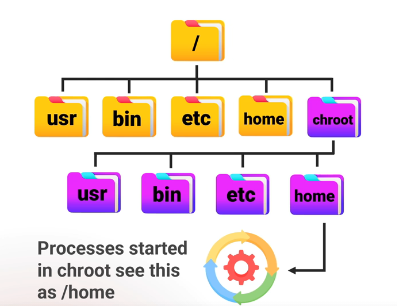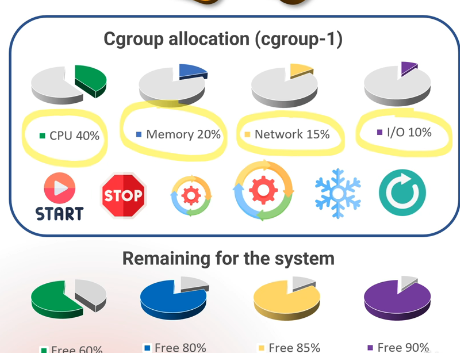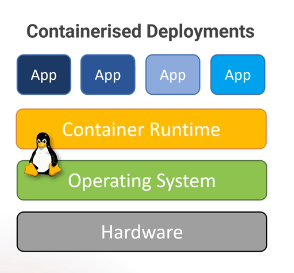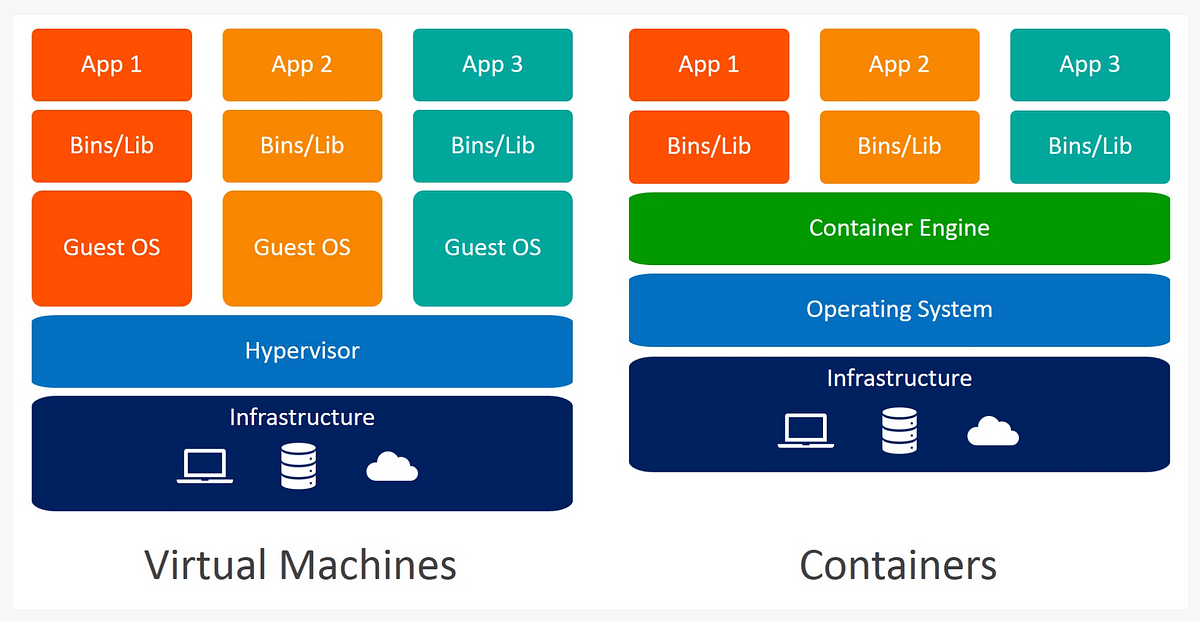Introduction to Containers
What are containers? Explore the evolution, benefits and use cases of containers.
Introduction to Containers
Introduction
- Containers have revolutionized the way software is developed, deployed, and managed.
- In this blog post, we will explore the fundamentals of containers and their importance in modern software engineering.
What are Containers?
- Containers are lightweight, isolated environments that package software and its dependencies together.
- They provide a consistent and reproducible runtime environment, ensuring that applications run consistently across different systems.
- Containers are based on containerization technologies like Docker, which enable developers to build, ship, and run applications seamlessly.
History
- Containerization
- Mainframe Era (1960s)
- The mainframe era in the 1960s marked the origin of virtualization with IBM’s CP/CMS (Control Program/Console Monitor System).
- This technology introduced the concepts of time-sharing and virtual machines (VMs), enabling multiple users to share the same physical hardware efficiently.
- Each user operated in a fully isolated VM environment, allowing secure and concurrent processing.
- This innovation laid the foundation for modern virtualization by demonstrating the feasibility of resource sharing and isolation.
chroot (1979)
- chroot, introduced in Version 7 UNIX (1979), was a groundbreaking feature that allowed changing the root directory for a process and its children.
- This effectively created an isolated environment by restricting their access to a specific subset of the file system.
- By enabling a “chroot jail,” it enhanced security by limiting the potential damage a compromised process could cause, as it could no longer access or modify files outside its restricted environment.
- Use Cases: SSH shells with access to a Chroot environment, Apache Applications, etc.
FreeBSD Jails (2000)
- BSD (Berkeley Software Distribution) originated in the 1970s as a derivative of AT&T’s UNIX.
- BSD introduced several innovations, including TCP/IP networking, making it a preferred choice for Internet Service Providers (ISPs) due to its stability and advanced networking stack.
- In 2000, FreeBSD introduced
Jails, an enhancement over chroot. Jails provided isolated environments with their own file system, users, and network stack, enabling lightweight virtualization and multi-tenancy. - However, complexities arose due to the lack of dynamic resource allocation and limited isolation beyond the file system and network stack.
- Managing large-scale deployments and ensuring robust security required significant expertise, which paved the way for more sophisticated container technologies like Linux containers and Docker.
Virtual Machines (2000s)
- The 2000s marked a significant evolution in virtualization with the rise of virtual machines (VMs), enabling full hardware emulation and operating system isolation.
Hypervisor technology (1990s–2000s): Enabled the creation and management of virtual machines by abstracting hardware resources.Sun Solaris and HP-UX: Proprietary UNIX systems like Sun Solaris and HP-UX integrated virtualization features such as Solaris Containers and HP-UX vPars, allowing enterprises to partition physical hardware into isolated virtual environments for optimized resource utilization and workload management.VMware (1999): VMware revolutionized virtualization with its VMware Workstation and later VMware ESX/ESXi hypervisors, offering full-stack virtualization that supported running multiple OSes on x86 hardware. This innovation made virtualization mainstream in enterprise IT.VMware ESXi (2001–present)- A Type 1 hypervisor, allowed businesses to run multiple virtual machines on a single physical machine.
- VMware ESXi was often paired with
vCenter (2003–present), which provided centralized management for virtual machines and clusters.
Xen (2003): The open-source Xen hypervisor introduced paravirtualization, which enhanced performance by requiring guest operating systems to be aware of the virtual environment. Xen gained popularity for its lightweight design and was widely used in cloud platforms like AWS.
- Namespaces and cgroups (2007-2008)
- In 2002, the Linux Kernel introduced Namespaces and cgroups (Control Groups), laying the foundation for modern containerization by enabling process and resource isolation.
Namespaces: Provided isolated environments for processes by virtualizing system resources. Key types include:User: Isolates user IDs within namespaces, allowing separate user and group management, independent of the host system.PID: Provides isolated process ID spaces within namespaces, ensuring that processes in one namespace cannot see or interact with processes in another.Network: Enables isolated network interfaces, IP addresses, and routing tables.Mount: Separates file system mount points for different processes.UTS(UNIX Time-sharing System): Isolates hostname and domain name.IPC (Interprocess Communication): Isolates shared memory and message queues.
cgroups: Offered fine-grained control over resource allocation and monitoring. Features included:Resource Limits: Enforcing CPU, memory, and I/O usage caps.Prioritization: Adjusting resource access priorities for processes.Accounting: Monitoring resource usage for analysis and troubleshooting.Control: Dynamically reallocating resources across running processes.
Docker (2013)
- The evolution of Docker began in 2010 as DotCloud, a platform-as-a-service company, later renamed to Docker in 2013.
- Docker introduced a
shared kernel architecture, allowing containers to share the host OS’s kernel, reducing overhead. - It uses
Linux namespacesfor process isolation and cgroups for resource management and limits. - Docker’s simplicity allowed developers to package applications and dependencies into lightweight, portable containers, ensuring consistency across environments.
Containers v/s Virtual Machines/HyperVisor
| Aspect | Container | Hypervisor (VM) |
|---|---|---|
| Definition | A lightweight, portable unit of software that packages an application and its dependencies together. | A platform that allows multiple operating systems to run on a single physical machine. Each OS is isolated within its own virtual machine. |
| Isolation | Uses OS-level virtualization, sharing the same kernel but isolating processes. | Uses hardware-level virtualization, with each VM running its own OS kernel. |
| Resource Efficiency | More efficient as containers share the host OS kernel. Minimal overhead. | VMs are more resource-intensive due to running separate OS kernels for each VM. |
| Start-up Time | Fast start-up time, usually in seconds. | Slower start-up time, as VMs need to boot an entire OS. |
| Performance | Typically better performance due to low overhead from shared kernel. | Performance overhead due to running separate operating systems for each VM. |
| Portability | Highly portable, as containers can run on any system with the same container runtime. | Less portable, as VMs require a hypervisor to run on the host system. |
| Use Cases | Ideal for microservices, stateless applications, CI/CD pipelines, and cloud-native apps. | Best for running legacy applications, multi-OS environments, or scenarios where OS-level isolation is needed. |
| Management Tools | Docker, Podman, containerd, nerdctl, Kubernetes. | VMware, Hyper-V, KVM, VirtualBox. |
| Hardware Requirements | Uses less hardware resources compared to VMs. | Requires more hardware resources for each VM since each VM runs a separate OS. |
| Security | Shared kernel can lead to potential security risks; container isolation is weaker compared to VMs. | Stronger isolation with separate kernels for each VM, but more resource consumption. |
| Runtime | Managed by container runtimes like Docker, containerd, and others. | Managed by hypervisors like KVM, VMware, Hyper-V. |
| Operating System Support | Can run on any OS with the appropriate container runtime installed. | Each VM runs its own complete OS, which can be different from the host OS. |
| Use of Host Resources | Containers share resources (CPU, memory, etc.) with the host. | Each VM consumes dedicated resources like CPU and memory for the entire guest OS. |
Benefits of Containers
- Containers offer several benefits that make them popular in the software industry:
- Portability
- Containers encapsulate applications and their dependencies, making them highly portable across different environments.
- Developers can build an application once and run it anywhere, whether it’s on a developer’s machine, a testing environment, or a production server.
- Isolation
- Containers provide a level of isolation between applications and the underlying host system.
- This isolation ensures that applications running in containers do not interfere with each other, improving security and stability.
- Scalability
- Containers enable easy scaling of applications. With container orchestration platforms like Kubernetes, developers can effortlessly scale their applications up or down based on demand, ensuring optimal resource utilization.
- Efficiency
- Containers are lightweight and have minimal overhead compared to traditional virtual machines.
- They start quickly, consume fewer resources, and allow for efficient utilization of hardware resources.
Use Cases for Containers
- Microservices Architecture
- Containers are a natural fit for building microservices-based applications.
- Each microservice can be packaged as a separate container, allowing for independent development, deployment, and scaling.
- Continuous Integration and Deployment (CI/CD)
- Containers play a crucial role in CI/CD pipelines.
- They provide a consistent environment for building, testing, and deploying applications, ensuring that the software delivery process is reliable and reproducible.
- Development Environments
- Containers can be used to create isolated development environments that closely resemble production environments.
- This helps developers avoid the “it works on my machine” problem and ensures consistent behavior across different development setups.
Presentation
This post is licensed under CC BY 4.0 by the author.
